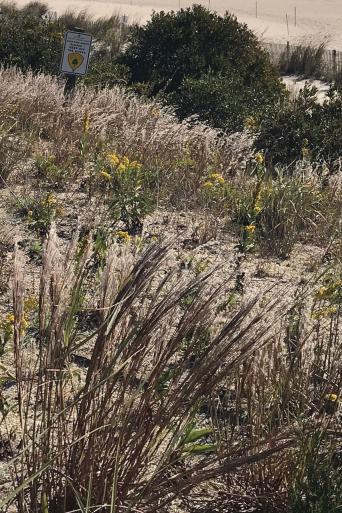
Liberate Your Lawn & Garden: Understanding Your Soil is Vital to Achieving Planting Success
At the start of each new project, my former landscape architecture employer would say, “We should add five percent to every proposal for education because we are no longer farmers and most people have no connection to soil.” She was not wrong!
As modern society has shifted away from local farming, our collective connection to the soil and the knowledge it afforded us has been reduced, if not virtually eliminated. Farming on my mom’s side ended with her grandparents; on my dad’s side, the break occurred before his grandparents immigrated to the United States. That generational disconnect has had a profound impact on the health of our soil, local biodiversity, water and, ultimately, climate. It also influences our idea of what constitutes a healthy landscape.
Today, the typical American landscape is dominated by the domestic lawn, which is not native to this continent. Lawn grasses originated in Eurasia and have been modified to stay green year-round. According to a 2005 study conducted by NASA, the lawn is our country’s number one crop, covering 63,000 square miles. We spend more than $40 billion annually on fertilizers, irrigation, gasoline and mowing to care for it. This is six and a half times more than the federal government’s budget for the Environmental Protection Agency in 2020. The lawn is truly a landscape on life support.
Soil is one of the most complex living systems on earth and unique to its geographical influence. For example, a limited and highly specialized palette of plants grow on sand dunes. If you love to visit the beach, you understand what I mean.
When passing through sand dunes, you will notice that one, maybe two plant species grow at the top where it is driest, a few more on the slopes, varying by sun orientation; and then larger plants at the bottom, where access to water may be a bit greater. And because nothing else can survive there, the palette will remain consistent until an aspect of the site’s topography or soil composition (percentage of sand, silt and clay) changes.
On sand dunes, mountain slopes, fertile plains and deserts, the composition of soil along with topography and orientation to light defines a soil’s water holding capacity. Bayberry (Morella pensylvanica), Red Cedar (Juniperus virginia) and Coastal Little Bluestem (Schizachyrium littorale), all plants found growing at the beach, cannot only withstand drought, salt and scorching full sun, they can also reproduce in these conditions. And reproduction is the number one sign of health in a native plant landscape.
Why does this matter? Native plants are specialists; they have evolved to survive and reproduce in specific soil conditions. Consider that, in designing and planting native landscapes or your garden, there is no such thing as bad soil, only bad plant choices. Without understanding each landscape’s unique soil characteristics, it can be a challenge to select the appropriate plants. There is a native plant that will grow in every condition — deserts, waterbodies, mountainsides, shady valleys, parking lot cracks and everywhere in between. They grow where they grow because they can and others can’t. So it’s time we all got reconnected and interested in our soil.
Three great websites for researching your soil conditions are: the USDavis SoilWeb, EPA’s How’s My Waterway and the ArcGIS My Map’s US EPA Ecoregions Level III and IV. Type your address into each site’s location finder and have fun discovering new facts about your environment and soil.
Sarah Endriss is landscape planning and design professional specializing in ecological-based garden and habitat design. She is principal of Asarum LandDesign Group adjunct faculty at Jefferson University and a restoration design consultant for WildLawn, an ecological native grass alternative to traditional lawns. Sarah can be reached at Sarah@asarumlanddesign.com

